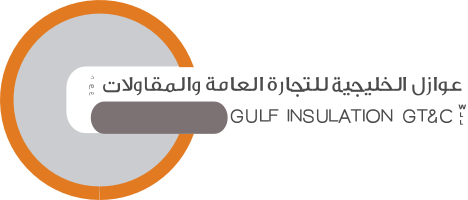Harnessing micro-irrigation
Flood irrigation provides just 35-40 % water use effectiveness, in the place of micro irrigation which has as much as 90 % effectiveness. This presents an exciting opportunity for widescale investment in micro irrigation as a key solution to solving India’s water crisis whilst the coverage of drip (2.13 percent) and sprinkler (3.30 percent) methods of irrigation is meagre compared to its total potential in India.
Analysis highlights that the spread that is slow of irrigation is certainly not due primarily to financial reasons, but because of a not enough understanding one of the farmers concerning the genuine financial and revenue-related advantages of it. By adopting micro-irrigation, farmers encounter a rise in efficiency – when you are in a position to get a handle on, quite exactly, water application during the plant origins, crop yield is increased, leading to a rise in earnings. Also, farmers whom follow micro irrigation experience a cost that is reduced of. You can find cost benefits to be produced by decreasing the usage of seeds via line seeding vs broad seeding, and decreasing the importance of weed control. There are time that is significant labour cost savings to be manufactured, whilst the micro irrigation system is completely fixed, needing less spending on labour for weeding and watering crops.
As the federal Government of India happens to be implementing a centrally sponsored scheme on micro irrigation with the aim to improve water use effectiveness into the farming sector by marketing drip and sprinkler irrigation technologies, in a lot of areas (as an example, Punjab) the federal government provides farmers with free or subsidised power to pump water, which will not market the judicious usage of water among farmers. During these areas, it is hard to incentivise farmers to transform to more effective ways of irrigation (ie micro irrigation.)
Reduced total of water intensive plants
Furthermore, in accordance with professionals during the Central liquid Commission, Asia’s cropping pattern highlights the rampant cultivation of water intensive crops such as for instance sugarcane, paddy, cotton and banana, across water stressed parts of  Asia. Maharashtra is just one of the water that is worst stressed states of Asia, but federal federal government information shows that Maharashtra can be the biggest state with sugarcane cultivation when you look at the tropical area. Likewise, paddy and sugarcane can be cultivated in very water stressed parts of the Cauvery basin, which spreads throughout the conflicting states of Karnataka and Tamil Nadu.
Asia. Maharashtra is just one of the water that is worst stressed states of Asia, but federal federal government information shows that Maharashtra can be the biggest state with sugarcane cultivation when you look at the tropical area. Likewise, paddy and sugarcane can be cultivated in very water stressed parts of the Cauvery basin, which spreads throughout the conflicting states of Karnataka and Tamil Nadu.
As farming may be the biggest customer of freshwater in Asia, the change from water intensive plants, to less water intensive plants such as for example pulses, millets, veggies, legumes, oilseeds, and medicinal flowers, can spare large volumes of freshwater in India, with just minimal expense, for the advantage of farmers.
Highlighted in Red – Crops with very high dependence on water
Increasing water harvesting
The majority that is vast of farmers reside in areas of the planet where rain is bound or really irregular. Frequently, considerable amounts of rainfall are received however in an extremely span that is short of, making the remainder 12 months dry.
Liquid harvesting, the capture and storage space of rainwater for usage during dry durations, is really a technology shown to increase meals protection in drought areas that are prone. Erosion control and groundwater recharge are extra benefits of water harvesting techniques, which play a role in agricultural development and resource preservation.
There are numerous forms of water harvesting structures. At the farm degree, probably one of the most systems that are effective the farm pond. A farm pond is just a dug down pond constructed in or close to the farm. Rainwater is collected when you look at the pond and kept for future uses such as for example irrigating plants, recharging groundwater, aquaculture and supplying normal water for farm pets.
Watershed development
A watershed is a place of land and water bounded with a drainage divide, within that the area runoff collects and flows out from the watershed through a solitary socket into a lager river or pond. Watershed technology is employed in rainfed areas.
Watershed administration requires the conservation that is effective of and water resources for sustainable manufacturing. It involves the handling of land area and vegetation to be able to save the soil and water for instant and term that is long towards the farmers, community and culture all together.
The introduction of watersheds can be an crucial programme to create most useful usage of rainwater for agricultural production while increasing soil preservation and biodiversity. Happily, the federal government of Asia has offered priority that is top watershed development to produce assured water way to obtain agriculture in rainfall given areas. It’s estimated that over 63 per cent of this cultivated lands in the rainfall given areas should be brought under watershed development to save soil and water, which often would enhance the crop yields along with ground water dining dining table.
Improved water preservation policy in agricultural sector
Addititionally there is a necessity for a far more significant water preservation policy into the agricultural Sector. Its imperative that the need is recognized by us to target preservation efforts on agricultural water used to enhance our water reserves. Laws to store water when you look at the farming sector are absent. Having said that, preservation regulations are strict in sectors where in actuality the range to truly save is minimal.
Strengthening and advertising water individual associations
Liquid User Associations (WUA) perform a important part in producing a feeling of ownership of water resources therefore the irrigation system among the list of individual farmers, in order to market economy in water usage and conservation for the system. A WUA is definitely an organization for water administration consists of a team of small and water that is large-scale, such as for instance irrigators, whom pool their monetary, technical, product, and hr for procedure and upkeep of a nearby water system, such as for example a river or water basin.
In Asia, use of PIM (Participatory Irrigation Management) was sluggish when compared with various other nations, regardless of the known proven fact that the PIM approach supplies a ‘win-win’ situation both to farmers additionally the government. The major great things about PIM consist of effective and maintenance that is economic of infrastructure, enhanced circulation equity of irrigation water, upsurge in irrigated area, freedom of crop preparation, effective usage of area and groundwater, increased price data recovery, and greater earnings to farmers. Nonetheless, for an effective and sustainable PIM, there clearly was a need for competent regional leadership, help and guidance from non-government organisations, financial advantages to farmers through collective action, and irrigation infrastructure that is robust.
Improved water administration in farming, calls for us to nurture a more powerful relationship between farmers and also the valuable resource of water, to ensure individuals can comprehend the worth of each and every raindrop and realize that unless we have been prudent, and frugal, with this usage of this limited resource, there may never ever be sufficient water for many.
Investment needs to be produced in educating and empowering farmers from the different answers to harvesting and conserving water – to make sure that the agricultural sector begins to be a vital an element of the treatment for Asia’s water crisis, in place of a key area of the issue.

